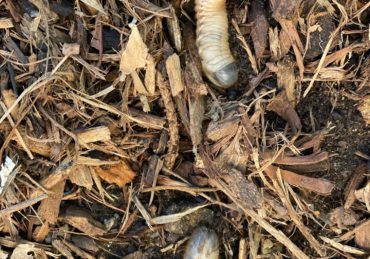Effective Strategies for Eliminating Moss from Your Lawn
Dealing with moss in your lawn can be frustrating, but with the right approach, you can restore your yard to a lush, green landscape. This article will guide you through effective and actionable steps in how to get rid of moss in lawn. From understanding why moss grows to selecting the best methods for its removal, we offer both valuable and practical advice that you can implement into your lawn care regimen.
Identifying the Causes of Moss Growth
Moss growing in your lawn often signals underlying issues that need to be addressed to prevent future growth. It’s important to understand that moss grows and thrives where grass struggles. This includes areas with compacted soil, poor drainage, or spots with excessive shade. Additionally, factors such as soil acidity, inadequate sunlight, and improper lawn maintenance can create an environment conducive to moss growth. By identifying and tackling these root causes you can work to get rid of moss in your lawn and prevent future growth.
Common Reasons for Moss Infestation
Several factors contribute to the growth of moss in your lawn, each creating an environment where moss can outcompete grass. Poor drainage is a primary factors, as standing water or consistently damp soil provides the moisture moss needs to thrive. Soil compaction is another common issue; compacted soil restricts root growth and reduces the availability of oxygen and nutrients available to the grass, weakening it and allow moss to take hold. Shade from tree, buildings, or other structures limits the amount of sunlight reaching the grass, inhibiting its growth and giving moss an advantage. By addressing these common issues, you can work to create conditions less favorable for moss and more supportive of healthy grass growth.
How Soil Acidity Promotes Moss Growth
Soil pH levels play a significant role in the health and composition of your lawn, directly affecting dominate grass or moss growth. Grass generally prefers neutral to slightly alkaline soil, with a pH range of 6.0 to 7.5 being ideal for most grass types. In contrast, moss thrives in more acidic conditions, often flourishing in soil with a pH below 6. When the soil becomes to acidic, essential nutrients for grass growth become less available, weakening the grass and allow moss to outcompete it. Testing your soils pH and adjusting it accordingly is crucial for maintaining a healthy lawn. If your soil is too acidic, applying lime can help riase the pH to a more suitable level for grass. Regular monitoring and adjustments will ensure that your lawn remains conducive to grass growth and less hospitable to moss.

The Impact of Lawn Care Practices
Certain lawn care practices, while well-intentioned, can inadvertently encourage moss growth by creating favorable growing conditions. For instance, overwatering your lawn can lead to consistently damp soil, which provides the perfect environment for moss to thrive in. Similarly, mowing at the incorrect height can weaken the grass by reducing its ability to photosynthesize and compete with moss. Grass that is kept at an appropriate height, typically around 3 inches, can develop stronger roots and better withstand environmental stresses. Ensuring proper watering practices and maintaining the correct mowing height are essential practices to promote healthy grass growth and prevent moss from taking over.
Assessing Your Lawn's Condition
Evaluating your lawn to identify the extent of moss infestation and underlying issues is the first steps toward effect remediation and effectively getting rid of moss in your lawn. Begin by thoroughly inspecting your lawn, paying attention to areas where the most is most prevalent. Note the patterns of moss growth and consider factors such as shade, soil moisture, and compaction in these areas. Conduct a soil pH test to determine if acidic conditions are contributing to the problem and assess drainage after rainfall. Document your findings to develop a comprehensive understanding of what factors are causing moss growth. This evaluation will inform your action plan, allowing you to target the root causes of moss growth and implement effective solutions for a healthier lawn.
Conducting a Soil Test
Performing a soil test to check pH levels and nutrient content is a straightforward process that can greatly enhance your lawn care strategy when combating moss growth. Soil tests easily obtainable and available for purchase at any garden center. Collect soil samples from various parts of your lawn using a clean trowel and digging down about 4-6 inches for the best sample. Follow the instructions provided with your soil test kit to prepare and test the soil. Typically, this involves placing a small amount of soil in a test container, adding a testing solution, and waiting for the color change that indicates pH levels and nutrient content. Compare the results to the guide included with the kit to determine the soil’s pH and the levels of key nutrients such as nitrogen, phosphorus, and potassium. This will help you understand any imbalances or deficiencies in your soil, allowing you to adjust your lawn care practices accordingly for optimal grass growth and reduced moss presence.
Evaluating Drainage and Moisture Levels
Assessing lawn drainage and moisture levels is crucial to determining if the contribute to moss growth. Start by observing your lawn after a rainfall and look for areas where water pools or remains damp for extended periods of time. This indicates poor drainage. You can also test drainage by performing a percolation test by digging a hole about 12 inches deep and filling it with water. Measure the time it takes for the water to drain; ideally, the water should drain within a few hours. Slow drainage suggests compacted soil.
Additionally, consider using a moisture meter to measure soil moisture levels at various spots in your lawn. Consistently high moisture readings in areas with moss indicate excessive dampness that promotes moss growth. Identifying and addressing these drainage and moisture issues—such as by aerating the soil, improving surface grading, or installing drainage solutions—will create a more favorable environment for grass and help prevent moss proliferation.
Identifying Shaded Areas
Identifying shaded areas in your lawn that may be contributing to moss growth is essential for combating continuous and future growth. Begin by observing your lawn throughout the day to note which areas receive limited sunlight and are shaded for extended periods of time. Pay special attention to spots under large trees, near buildings, fences, or other structures that block sunlight. Look for thin, weak grass in these shaded areas, as insufficient sunlight hampers grass growth and gives moss an advantage. Additionally, the presence of dense tree canopies can contribute to shade and create a damp environment by limiting air circulation. Document these shaded zones and consider strategies to increase sunlight exposure, such as selectively pruning tree branches, thinning out dense shrubbery, or even relocating certain structures if feasible. Addressing these shaded areas can greatly reduce moss growth and help get rid of moss in your lawn.
Effective Methods to Remove Moss
To eliminate moss from your lawn it’s important to take practical steps including manual removal and moss control products. Moss can be manually removed by using a scarifying rake or a regular garden rake. Once the moss is removed, work to improve soil drainage by aerating your lawn. Additionally, it’s important to test your lawn’s pH to ensure the level is suitable for grass growth.
Once these steps have been evaluated and completed, ensure that you are properly taking care of your lawn. Watering habits should be adapted, the lawn should be mowed at 3 inches, and ensure trees and shrubs are pruned to avoid excessive shade.
Manual Removal Techniques
Manually removing moss from your lawn involves methods like raking and scarifying, both off which are effective in getting rid of moss from your lawn. Hand raking is a straightforward approach; using a spring-tine rake, vigorously rake the mossy areas to lift and remove the moss from the soil surface. This method is suitable for small lawns or isolated moss patches.
For larger areas, scarifying is more efficient. Use a lawn scarifier, which can be a manual or powered tool, to cut into the soil and pull up moss, thatch, and other debris. Scarifying not only removes moss but also helps aerate the soil, encouraging grass to establish stronger roots. After raking or scarifying, collect and dispose of the moss debris, and consider overseeding the treated areas with grass seed to promote dense, moss-resistant turf. Regular raking and scarifying, combined with proper lawn care practices, can effectively control and prevent moss growth.
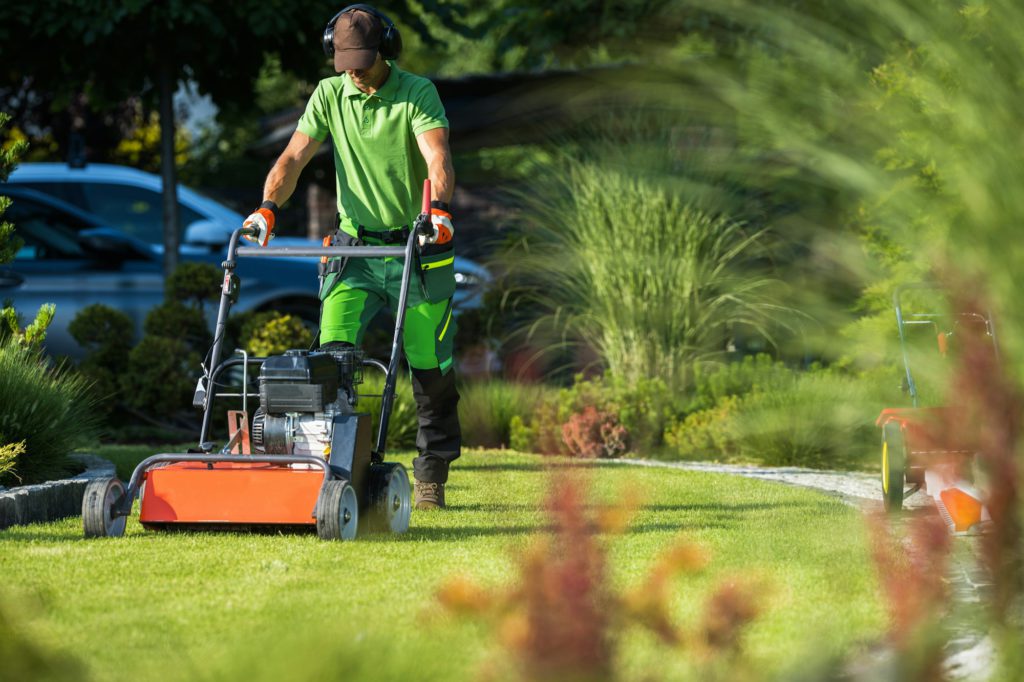
Using Moss Control Products
Chemical treatments and natural remedies can both be effective in getting rid of moss in your lawn. For chemical options, moss control products containing iron sulfate or ferrous ammonium sulfate are commonly used. These products work by killing the moss, which then turns black and can be easily raked away. Apply these treatments according to the manufacturer’s instructions, usually during the cooler, damp months for best results.
For those preferring natural remedies, household items like baking soda and dish soap can be useful. Mis a solution of baking soda with water (2-3 tablespoons per gallon) or a few drops of dish soap with water (one ounce per gallon) and spray it directly onto the moss. These solutions raise the pH on the moss surface, causing it to dry out and die. Additionally, improving the soil health with compost or natural fertilizers can enhance grass growth, making it harder for moss to re-establish.
Adjusting Lawn Care Practices
Adjusting your lawn care routine can greatly help in reducing moss growth and ensuring healthy grass growth. Start by setting your mower to the correct height, generally around 3 inches, to ensure the grass is strong enough to outcompete moss. Grass that is cut too short often gets burned and dies out. Regularly aerating your lawn is also beneficial as it alleviates soil compaction, which improves air and water flow to grass roots and helps create a less favorable environment for moss. Proper watering techniques are also crucial; water deeply but infrequently to encourage deep root growth. You should be watering early in the morning to minimize evaporation, ensuring your lawn is absorbing the water.
Get an instant price for lawn mowing with LawnGuru and hire the best professionals to help you take care of your lawn!
Preventing Future Moss Growth
Preventative measures are crucial to ensure that moss does not return after removal. Maintaining a consistent lawn care routine is the first step to promoting healthy grass growth. Keep your lawn is kept at the appropriate height, generally around 3 inches. Regularly aerate your lawn to prevent soil compaction and improve drainage. Ensure your lawn receives adequate sunlight by pruning tress and shrubs that create excessive shade. Test your soil’s pH regularly and amend it as necessary. Using fertilizer and watering properly will also help in keeping your lawn healthy, further preventing future moss growth.
Improving Lawn Drainage
Proper lawn drainage is vital for preventing moss growth and maintaining a healthy lawn. One option is installing French drains, which involve digging a trench, laying a perforated pipe, and covering it with gravel. This system redirects excess water away from poorly drained areas, reducing moisture levels that favor moss. Another method is using aeration tools, such as a garden fork or a mechanical aerator, to perforate the soil with small holes. This process alleviates soil compaction, allowing water to penetrate deeper into the ground rather than pooling on the surface.
For persistent drainage issues, consider regrading your lawn to ensure a proper slope that facilitates runoff. Incorporating organic matter like compost can also improve soil structure and drainage by increasing its ability to absorb and retain water evenly. By implementing these techniques and solutions, you can enhance your lawns drainage and encourage grass growth.
Maintaining Optimal Soil pH
Maintaining a balanced soil pH is crucial for promoting a healthy lawn and preventing moss growth. Be sure to test your soil’s pH regularly, ideally in early spring and late fall, using a soil test kit or professional service. Grass generally thrives in a pH range of 6.0 to 7.5, while moss prefers more acidic conditions. If your soil is too acidic, apply lime to raise the pH; if it’s too alkaline, use sulfur or iron sulfate to lower it. Incorporating organic matter, such as compost, into your soil can help buffer pH levels and provide essential nutrients. Additionally, it’s important to avoid overusing fertilizers high in nitrogen, as they can contribute to soil acidity; instead, use balanced fertilizers that support overall soil health. Based on these tips, regularly monitor and adjust your soil’s pH and maintain good lawn care to ensure you’re creating a balanced environment where your grass will thrive.
Enhancing Lawn Health with Fertilization
Fertilization plays a crucial role in promoting healthy grass growth and preventing moss by providing essential nutrients that grass needs to thrive. A well-fertilized lawn has stronger, denser grass that can outcompete moss for light, water, and nutrients. Nitrogen, phosphorus, and potassium are the primary nutrients in most fertilizers, each supporting different aspects of grass health. Nitrogen promotes vigorous growth and rich color, phosphorus aids in root development, and potassium enhances overall resilience. By applying a balances fertilizer according to your lawn’s specific needs and growth cycles, you can ensure your grass receives the nutrients it requires. Regular fertilization also helps improve soil structure and encourages beneficial microbial activity. Healthy grass with a strong root system is better equipped to withstand environment stresses, reducing bare patches where moss can establish itself. Therefore, consistent and appropriate fertilization is a key preventative measure when determining how to get rid of moss in your lawn and ensuring moss doesn’t grow back.
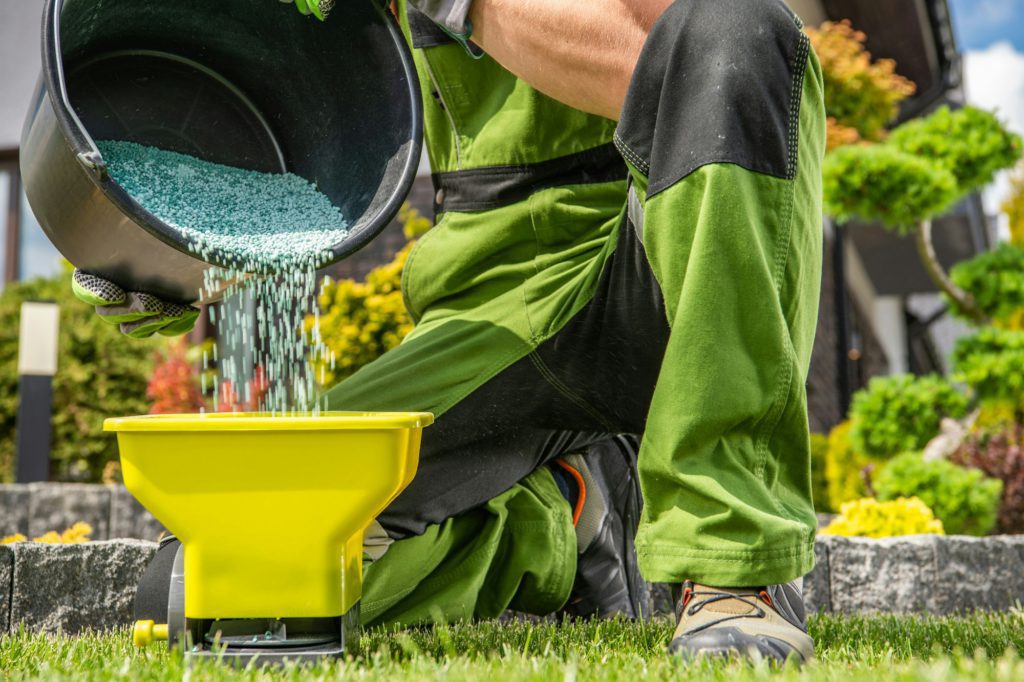
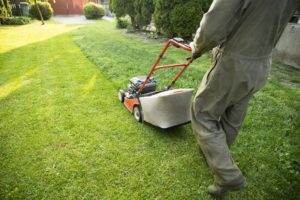
What’s the Best Height to Cut Grass Through the Year?
One of the most common mistakes we see on lawns isn’t overwatering, or even forgetting to fertilize, it’s mowing at the wrong height for the season. That “one setting fits

The Most Drought Tolerant Grass for Full Sun Lawns
When summer hits hard and rain is nowhere to be found, even the greenest lawns can turn to hay. Homeowners walk outside, shake their heads, and wonder how the neighbor’s
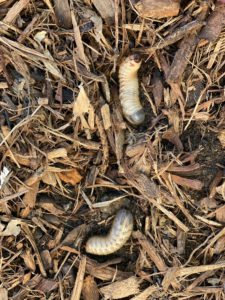
How to Best Treat Grub Infestations
A homeowners walks across the yard in late summer, noticing new patches of thinning, brown grass and noting the summer heat at the cause. What they don’t realize is that
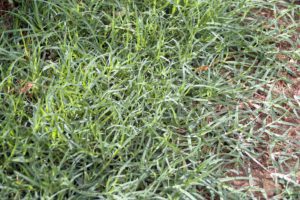
What Kind of Grass Grows in Florida?
It’s a late July afternoon, and you’ve just stepped barefoot onto your front lawn. The heat hits your skin, but your biggest concern is the patchy brown spots creeping across

How Long After Weed and Feed Can I Water?
It’s early Saturday morning. You’ve just spread weed and feed across the lawn, the kids are still asleep, and you’re wondering whether you should go ahead and set the sprinklers.

Bermuda Grass in Winter
You wake up one crisp December morning, glance out the window, and your once-green lawn has turned a dull tan. No patches, no dead spots, just uniformly brown. It looks



